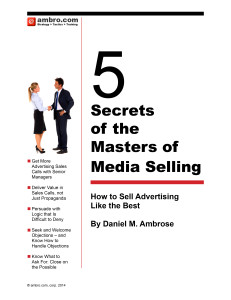My career has always been about how high-quality media can thrive. First about ad-sales, then digital evolution, always about the big picture that makes for success. For the last decade the business model has been changing. It is now clear that revenue directly from readers and viewers is the the future.  But will it be subscriptions, sometimes called memberships? Or will it be pay-as-you-go, as with small fees to reach each article?
But will it be subscriptions, sometimes called memberships? Or will it be pay-as-you-go, as with small fees to reach each article?
How many micro-payment schemes for article-by-article payment have been launched since the dawn of the internet age? At least a 1/2 dozen. The latest is “LaterPay,” pun intended. Will the opportunity to pay later make readers more likely to agree and read now?
None of the micro-payment solutions have caught on to become meaningful revenue earners for quality media. The reason is clear.
All of these micro-payment systems forget the one key problem: they require too many decisions of readers who already have too many choices. They focused on the technology, not the user.
When a potential reader encounters a piece of content they might read if they accept a charge, however small the fee may be, they are faced with making a decision; to buy or to move on. But the potential reader doesn’t have enough information to make a good decision. The users may wonder if they can find the equivalent story elsewhere for free. Or they may not be sure they trust the author, or the media-brand, publishing the story. The reader is forced to consider a cost-benefit analysis. The cost is clear, but the benefit is unknown — having not yet been able to read the story. Will it deliver on enjoyment, information, or something they will want to share with friends? It’s unknown.
That is one reason why all members of the quality media business should get serious about digital subscriptions as the primary source of revenue. But first a quick review of how we arrived at this point in the history of media economics.
I started my career selling advertising, because advertising success seemed to be what separated the most successful media from the also-rans. Sure, most magazines and newspapers in the 1970s and ’80s were based on the paid-circulation model. But with more advertising, top media could spend more money on their circulation marketing in order to grow. And the most successful — because of advertising success — would be able to subsidize some of their subscribers, to promise circulation to advertisers, where the main revenue stream came from. The peculiar economics of promising a rate-base to advertisers made magazines and newspapers willing to lose money on circulation to make bank on advertising. Readers got a bargain, paying less for a subscription than the cost of the paper to print and postage to send them the magazine. Advertisers were happy because the bargain-hunting subscribers were still the right target audience for their marketing spending.
Yes, there were single-copy sales, too…mini-payments for semi-predictable bundles of content, not micro-payments, for articles. With few exceptions, single copies made up a minority of the circulation of successful media. Only the most “popular,” meaning those with the most salacious or alarming or sensational content were able to get a major part of their circulation to come from repeated one-time purchases.
Subscriptions will be the primary driver for quality media, because relying on advertising as the primary revenue stream puts publishers in competition with companies that don’t pay anything for content. Social media and search, especially Facebook and Google, offer easy ad-buying, precise targeting, stupendous scale, and very low prices. More recently, Amazon has entered the advertising fray, too, by putting advertising even closer to the point of purchase, and at prices with which quality publishers can’t afford to compete.
Advertising will remain a meaningful revenue stream for quality publishers. But it has lost its primacy. Just notice the advertising that paid-subscribers are seeing within the New York Times online and app editions. Publishers with a substantial digital subscription revenue stream are better able to target advertising for their customers to their known audience. And subscription-supported publishers can more confidently turn away advertising of questionable taste, garish and interruptive or distracting creative, or for questionable products or services that irritates their paid readership. The advertising that does appear is less offensive to the audience, and in some cases more valuable, like fashion ads in Vogue, or boots in Backpacker.
Meanwhile, media consumers have shown they will pay for media they value and trust via a subscription. Netflix broke the ground for all media. Even when offered the opportunity for abundant free television, consumers agreed they are willing to pay for more consistent and higher quality. The New York Times and other national newspapers, too, are showing that consumers know the difference between content of quality they trust and the free-feed of questionable quality they get from their social media, or from feeds like Apple News, or Flipboard. These services can be configured to interests, but primarily send “trending” news that will include whatever many readers are clicking upon.
In a world where consumers are overwhelmed by the need to make choices, subscriptions are becoming mainstream in many areas beyond media. Even cars and food may be ordered by subscription, in addition to the now prevalent software by subscription.
How quality media sell advertising won’t change just because subscription revenue grows. Ad sales teams will still need to crack new accounts, grow commitments, and renew advertisers like they have before. But digital ad-sales will begin, again, to use the sales pitch that advertising appearing in their media benefits from an exclusive atmosphere that adds value to the impression. Both by association to the media that subscribers value enough to pay for, and by association to other advertisers that have been permitted to appear, advertisers too will benefit from the new business model of subscription plus advertising.
The best sales communications are a story. Ambro.com can help you craft your story, and help your sales team learn now to tell their story to win more and win new business. Contact us for a proposal.
Update 07/16/2019: Here is the latest news about a micropayment scheme being ended.

